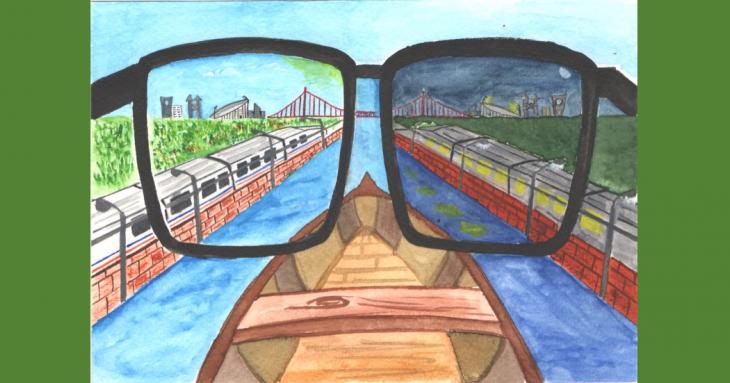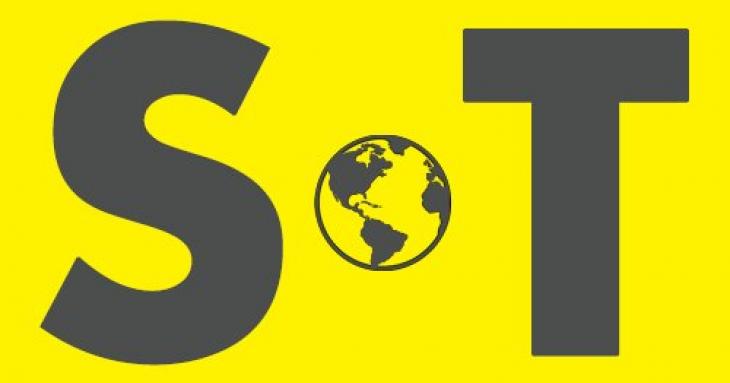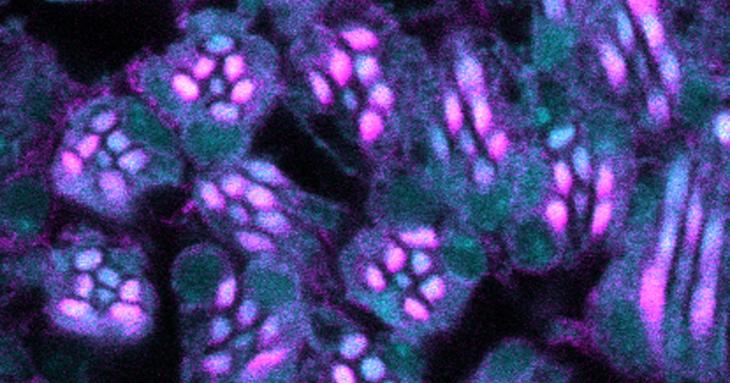-
Purkinje Neurons in Mouse Cerebellum Make the Journal of Neuroscience Cover
The Journal of Neuroscience’s edition on 28 April 2021 Volume 41, Issue 17, carries a cover image created by Sreeja Kumari Dhanya, whose paper with Prof. Gaiti Hasan is published in this edition.
This confocal image shows Purkinje neurons in a mouse cerebellar section. Purkinje neurons that expresses tdTomato fluorescence are immunostained with calbindin (green). The ER-Ca2+ sensor STIM1 supports expression of genes that maintain dendritic morphology and synaptic input of these cells.
-
A matter of fine balance: electrical balance in the brain
Image: Despite more than a million fold difference in the light intensity, our brains enable us to see the same scene in broad daylight and a dim night by the process of normalization. This article shows how brains "can" perform normalization by precisely balancing two equal and opposite forces - excitation and inhibition.
Artist of the graphic: Hrishikesh Nambisan
-
How depression affects memory
Forming a memory of people, places, and events is a dynamic process, and many studies have shown that psychiatric disorders such as depression may affect this process.
Now researchers from the National Centre for Biological Sciences (NCBS), Bengaluru, have shown how memories change and get updated over time in people with unipolar and bipolar depression.
-
Surfing on calcium waves: A larva's journey to becoming a fly
Eric Carl, in his much-loved children's book, "The Very Hungry Caterpillar", takes us through the transformation of a gluttony caterpillar into a beautiful butterfly. For a scientist, however, this book is a Pandora's box of questions. How does the caterpillar know when to stop eating? Had he not eaten so much, would he have ever moved on into the cocoon?
-
Flying To The Tune Of A Neuropeptide Receptor: “Exciting” Insights From Fruit Flies
For a fruit fly, flying is just about everything. It is the most important innate behavior that helps the fly reach out to food sources and mates, escape predators, and find secure sites to lay eggs. But what gives the fruit fly its ability to fly relentlessly and reach out to your fruit bowl? A recent study from the lab of Prof.
-
Nutrients of neuroscience
Sumantra Chattarji, professor of neurobiology at the National Centre for Biological Sciences (NCBS), Bengaluru, says, “Even a month of social interactions, playtime, exercise, and sensory stimulation can make a two-month-old rat a better learner.” Other studies by Chattarji and his team of researchers have found that if these young rats are stressed for ten days, they lose those connections in the hippocampus.
-
A molecular pit crew responsible for refuelling in signalling cells
Raghu Padinjat’s group from the National Centre for Biological Sciences (NCBS), Bangalore
-
Small part of cellular protein that helps form long-term memories also drives neurodegeneration
Scientists have just discovered that a small region of a cellular protein that helps long-term memories form also drives the neurodegeneration seen in Amyotrophic Lateral Sclerosis (ALS). This small part of the Ataxin-2 protein thus works for good and for bad.
-
Three Bengaluru institutions announce largest joint mental health study in India
This is the first major and systematic research study of mechanisms of mental health disorders in India, scientists involved in the project claim.











